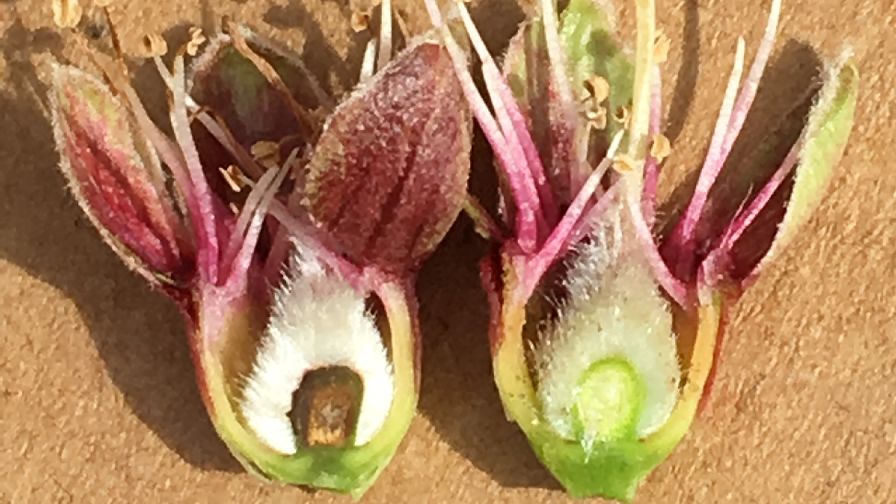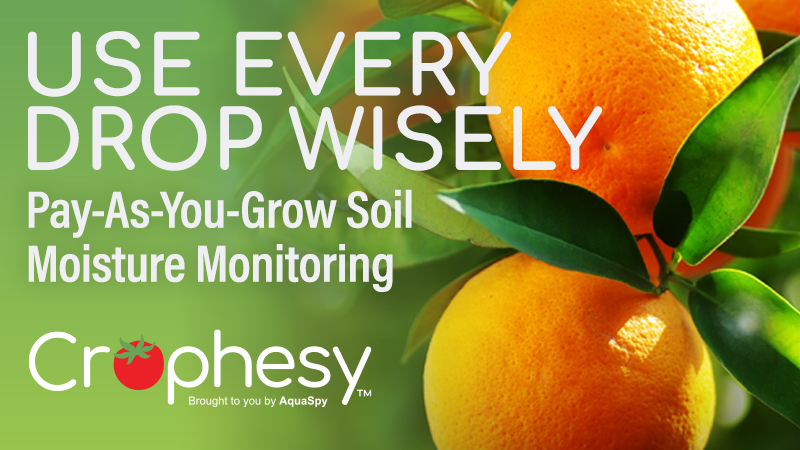What Happens When Almond Trees Freeze

Frost has clearly damaged the almond on the left. (Photo: Wes Asai)
During mid-to-late-February, California sustained some nearly unprecedented periods of freezing temperatures. Not only were the minimum temperatures some of the lowest recorded, but the durations were equally problematic.
Many growers with available wells and sprinklers had to run frost protection six to seven consecutive nights in soils that were additionally saturated with intermittent rainfall. Some growers were put in the position where they had to decide between saving the crop and saving the trees, as concerns about saturated roots and Phytophthora arose.
At the other extreme were the growers with only access to surface water from canals — which were not filled for the season yet. They could only stand by and hope for non-critical temperatures.
What actually happens to tree shoots and buds during a hard freeze? Plant cells can be damaged in a number of ways during a freeze. How cold it gets is as important as how quickly it gets cold.
During a slow freeze, water between the intracellular spaces freezes. Since the water potential of ice is lower than that of water in the liquid state, these ice crystals grow by drawing water from within the cells and ultimately dehydrates them. If the dehydration is severe enough the cells die.
During milder freezes, water may re-enter the cells through diffusion back to the solutes on the inside as the ice crystals thaw. Under rapid freezing or thawing conditions, the cell walls may rupture leading to the death of the cells. Also, if large ice crystals form rapidly in the intracellular spaces, they can puncture the cell walls directly.
Plants that are acclimated to severe temperatures are better able to tolerate them. Walnuts are better able to resist dieback if the current growth is acclimated to the lower temperatures. This is why it is important with young trees to withhold nitrogen and cut back on irrigations early enough in the fall, such that the new shoot growth ceases and sets a terminal bud before the first freeze. This mature tissue is hardier. Acclimated cells also accumulate more solutes, including carbohydrates, which acts as a natural antifreeze. For the most part, winter kill of limbs and scaffolds is not an issue as with walnuts.
The greatest concern with freezing temperatures in almonds is during the bloom period. During the bloom, and especially right after petal fall, is the most sensitive time for the developing almond. At this timing, even short 30-minute exposures to sub-freezing temperatures can cause significant yield damage.
In almonds, protective measures are taken to reduce the frost risk. These may including running sprinklers, using wind machines, and hiring helicopters when there are inversions.
More passive practices include keeping soil flat, clean, and moist such that it absorbs the greatest amount of heat during the day to re-radiate at night. Keeping the roots hydrated — even if water is not being run during the freeze event — is helpful, as it helps prevent the dehydration of the cells.










